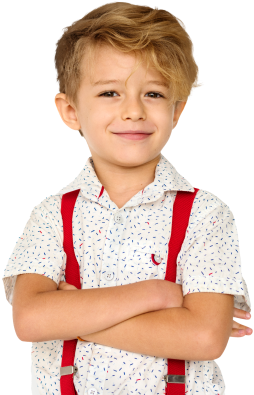The Portland Hospital, 234 Great Portland Street, London, W1W 5QT


The Portland Hospital, 234 Great Portland Street, London, W1W 5QT
Balanitis is an inflammation of the foreskin and occasionally the head of the penis. It is very common in boys and usually resolves in 2-3 days. Most cases settle down without any particular treatment and without any scarring. Occasionally it can recur and be a problem with pain, discharge and scarring.
Here at London Children’s Surgery we try to avoid surgery as much as possible in these patients but if conservative management fails then circumcision is warranted. Balanitis in children isn’t usually serious as the symptoms will usually clear up within a few days. However, it can be very uncomfortable and can keep coming back for some boys so it is important to see a doctor if you suspect that your child is affected.
Balanitis symptoms are usually fairly easy to recognise as they can be very uncomfortable and visible. Most young boys will complain of penile discomfort. It can be itchy with a red and inflamed foreskin and difficulty passing urine. The foreskin can appear tight and a foreskin which was previously retractile is no longer so.
Balanitis symptoms can include:

If you notice any of these symptoms or your child is complaining of soreness or discomfort then you should see a doctor. It is important to determine the cause of these symptoms as they could be signs of an infection that requires treatment. If balanitis symptoms are caused by an infection then there is also a risk that it could spread into the urinary tract and cause further problems. Balanitis that is caused by an infection can also be associated with other symptoms, such as a fever.
The doctor will also be able to advise you on what can be done to prevent the balanitis symptoms from coming back again. In most cases, balanitis in children won’t cause any serious issues and there won’t be any need for surgery. However, surgical balanitis treatments may be recommended if the symptoms keep coming back frequently.
Balanitis in a small degree nearly affects all men with an intact foreskin. The vast majority of cases are quite mild. Most child get what’s called chemical balanitis which is just a small amount of redness associated with the foreskin releasing. True infected balanitis occurs in approximately 5% of the population of boys of less than 5 years of age.
Balanitis in children can be associated with:
Balanitis symptoms are more common in boys with an intact foreskin, but the glans can become inflamed even in boys who have been circumcised. If both the foreskin and glans are affected then the condition is sometimes referred to as balanoposthitis.
Boys who have diabetes can be more likely to develop balanitis. Since it can be linked to skin conditions, it can also occur in boys who have conditions such as eczema that may affect the genitals. However, balanitis can affect any boy and it is particularly common in those under the age of 5.
Balanitis in children can also be associated with a condition called phimosis, which happens when the foreskin remain too tight to retract. The foreskin usually separates from the glans and becomes retractable between the ages of 2 and 6. Balanitis symptoms are more likely to occur before the foreskin has retracted or if it remains tight at a later age. Recurring balanitis in children can also increase the chances of phimosis persisting to a later age, if the problem is left untreated.
Balanitis in children can usually be diagnosed from the symptoms and an examination of the penis. In some cases, additional tests may be required to rule out other conditions such as infections that can cause similar symptoms. A sample of urine or of any discharge may be taken with a swab so that it can be tested in the lab to check for a bacterial or fungal infection that could be causing the balanitis symptoms.
Most children with balanitis can be managed conservatively and without surgery. Hygiene is very important to ensure the area is kept clean and retracting the foreskin is frequently not advisable. The penis should be kept as clean and as dry as possible. It should be washed with lukewarm water. It isn’t necessary to use soap or other products, which can irritate the delicate skin in this area. The penis should then be dried carefully before getting dressed. The penis should also be dried gently after peeing. If the foreskin has retracted, then the area underneath can be cleaned and dried carefully too, but you shouldn’t pull back a foreskin that has not retracted yet as this could be painful and might damage it.
Parents will be responsible for ensuring the penis is cared for properly during the early years, but it is important to ensure that boys learn how to take care of their bodies as they grow older so that they can continue to practice good hygiene for themselves. Cleaning the penis properly can relieve balanitis symptoms and reduce the chances of the condition coming back again in the future.
There is an occasional role for antibiotics or for topical creams. Different balanitis treatments can be recommended to tackle different causes of irritation. For example, antibiotics may be prescribed to clear up a bacterial infection while antifungal creams can be used to treat yeast infections. In many cases, balanitis in children is simply due to irritation rather than an infection. A steroid cream may then be recommended for balanitis treatment to soothe the symptoms.
Balanitis symptoms should begin to improve within a few days, but it is important to complete the full course of balanitis treatment if the doctor has prescribed any medication. Balanitis treatment is usually very effective and with good personal hygiene the chances of the symptoms coming back can be minimised.
Most children who get balanitis will get a second episode. However, ensuring that the penis is kept clean and dry can reduce the chances that the condition will come back.
It is usually not severe and rarely is circumcision warranted. If it is very problematic a circumcision is warranted. See circumcision information.
Circumcision surgery can reduce the chances of balanitis coming back again, but it cannot eliminate the risk of inflammation and infection entirely. The glans can still become irritated or infected if it is not cared for properly, so practicing good hygiene and teaching boys how to take care of their bodies will still be essential.
Balanitis is an inflammation of the foreskin, which is called the prepuce. In many situations the inflammation is relatively mild. Balanitis in children can be the result of an infection but it can also be caused by simple irritation.
Balanitis in a small degree nearly affects all men with an intact foreskin. The vast majority of cases are quite mild. Most child get what’s called chemical balanitis which is just a small amount of redness associated with the foreskin releasing. True infected balanitis occurs in approximately 5% of the population of boys of less than 5 years of age.
Most young boys will complain of penile discomfort. It can be itchy with a red and inflamed foreskin and difficulty passing urine. The foreskin can appear tight and a foreskin which was previously retractile is no longer so.
Balanitis in children can usually be diagnosed based on the symptoms and an examination of the penis. Further tests may be needed to identify the cause of the condition if it is due to a bacterial or fungal infection as this can help to guide the treatment. Infections can be identified by a urine test or by taking a sample of any pus or discharge using a cotton swab.
Most children with balanitis can be managed conservatively and without surgery. Hygiene is very important to ensure the area is kept clean and retracting the foreskin is frequently not advisable. The penis should be kept as clean and as dry as possible. It should be washed with lukewarm water. There is an occasional role for antibiotics or for topical creams.
Medication is sometimes recommended to relieve balanitis symptoms or to tackle the infections that can sometimes cause balanitis in children. Steroid creams can be used to relieve inflammation. Antibiotics or antifungal medications can be prescribed to clear up different kinds of infection. However, medication isn’t always required for balanitis treatment as the symptoms will often go away when the area is cleaned and cared for correctly.
Most children who get balanitis will get a second episode. It is usually not severe and rarely is circumcision warranted. Surgical balanitis treatment will only be recommended when the symptoms keep coming back or don’t respond to other types of balanitis treatment.
Good personal hygiene is the best way to prevent balanitis symptoms from occurring. The glans and foreskin need to be kept clean and dry to reduce the risk of infections or irritation. The foreskin should be treated gently and never pulled back before it has retracted naturally. Soap and other products that could irritate the skin should not be used in this area.
Balanitis can happen at any age, including in babies or toddlers who are still wearing nappies. If your child is in nappies then it is essential to ensure you’re changing them often in order to reduce the risk of balanitis. You should clean and dry the penis and foreskin during every change but avoid using baby wipes to do this as they can irritate the foreskin.
Balanitis is fairly common, especially in uncircumcised boys under the age of 5. Approximately 5% of boys will develop balanitis before this age. Many of these boys will have the condition more than once. Balanitis can affect older children and adults too, but it becomes less common once the foreskin has retracted and as boys learn how to practice better personal hygiene. However, most men will experience some balanitis symptoms at some point in their lives.
Balanitis in children doesn’t usually cause any serious problems but there can be complications in severe or persistent cases that don’t get the right balanitis treatments. One potential complication of balanitis is that an infection could spread into the urinary tract. Another possible complication is that if the balanitis symptoms are severe they can damage the foreskin, causing scarring that could result in permanent urinary problems or discomfort. Persistent balanitis can also lead to phimosis in some cases, which could prevent the foreskin from retracting normally. If there is any permanent damage to the foreskin after balanitis treatment then surgery may be needed to correct the problem.
You should always consult a doctor if you notice any symptoms of balanitis. It is important to find out what is causing these symptoms and to get advice on how to manage them. Although balanitis isn’t usually serious, it can be very uncomfortable for your son and in rare cases it can lead to complications such as scarring if it is left untreated. It is particularly important to see a doctor if the symptoms last longer than a few days or if they keep coming back as your son may need additional treatment to prevent balanitis.
Copyright © 2024 London children’s surgery. All rights reserved.
The contents on this site is for information only, and is not meant to substitute the advice of your own physician or other medical professional.